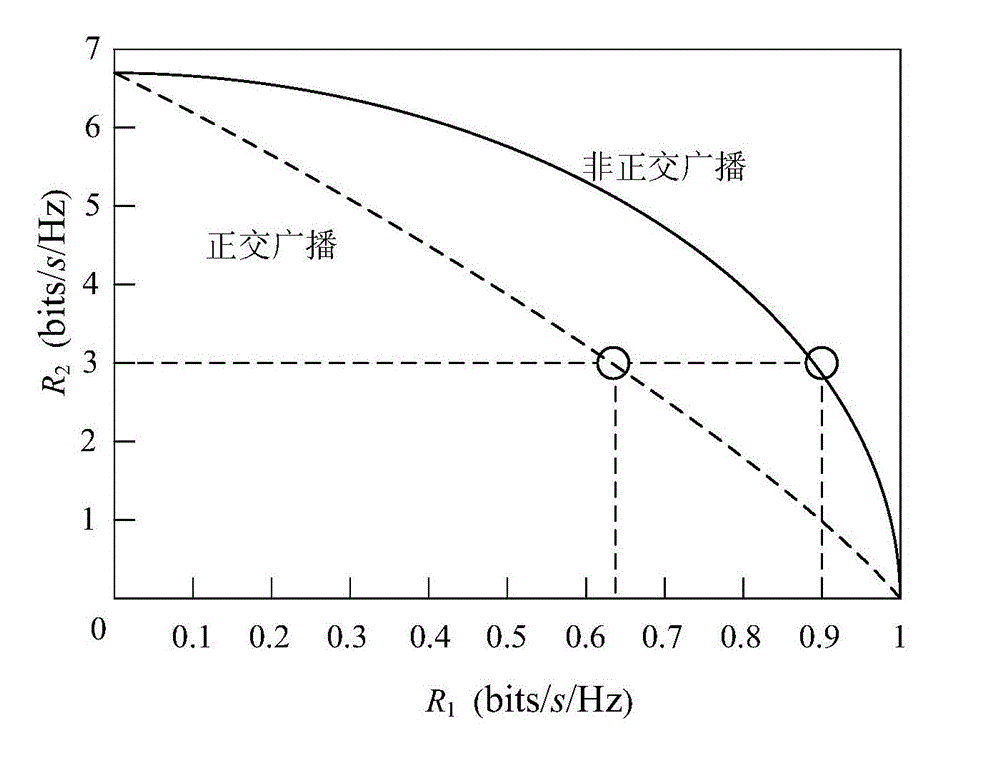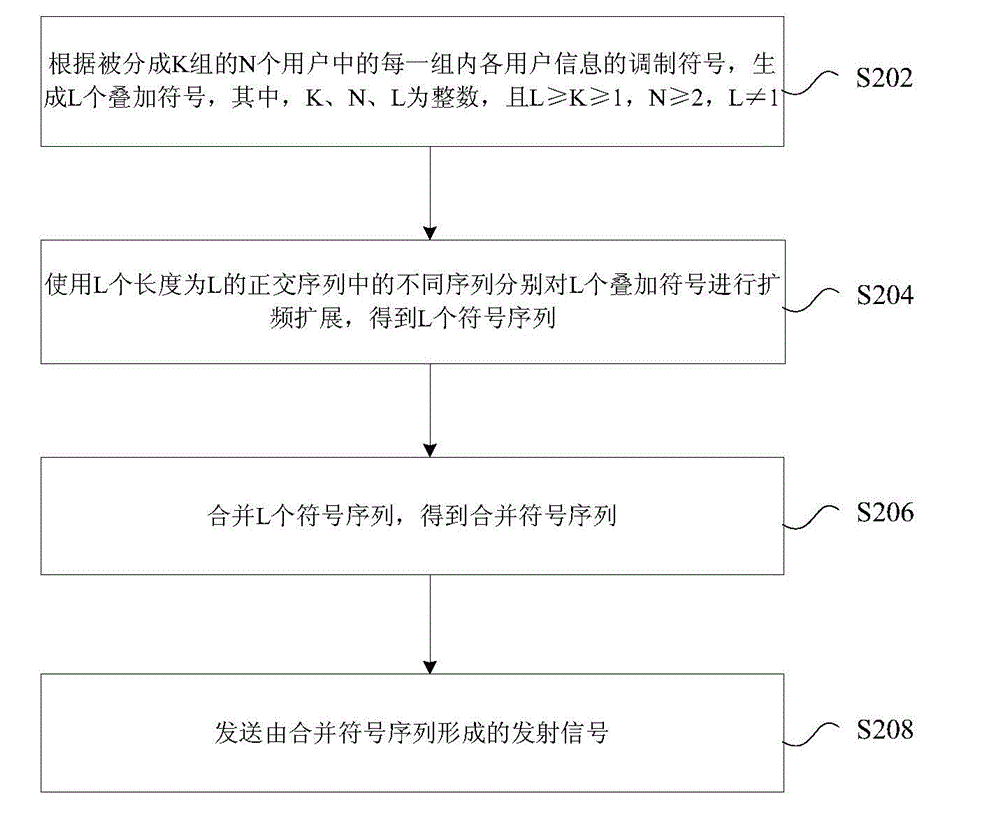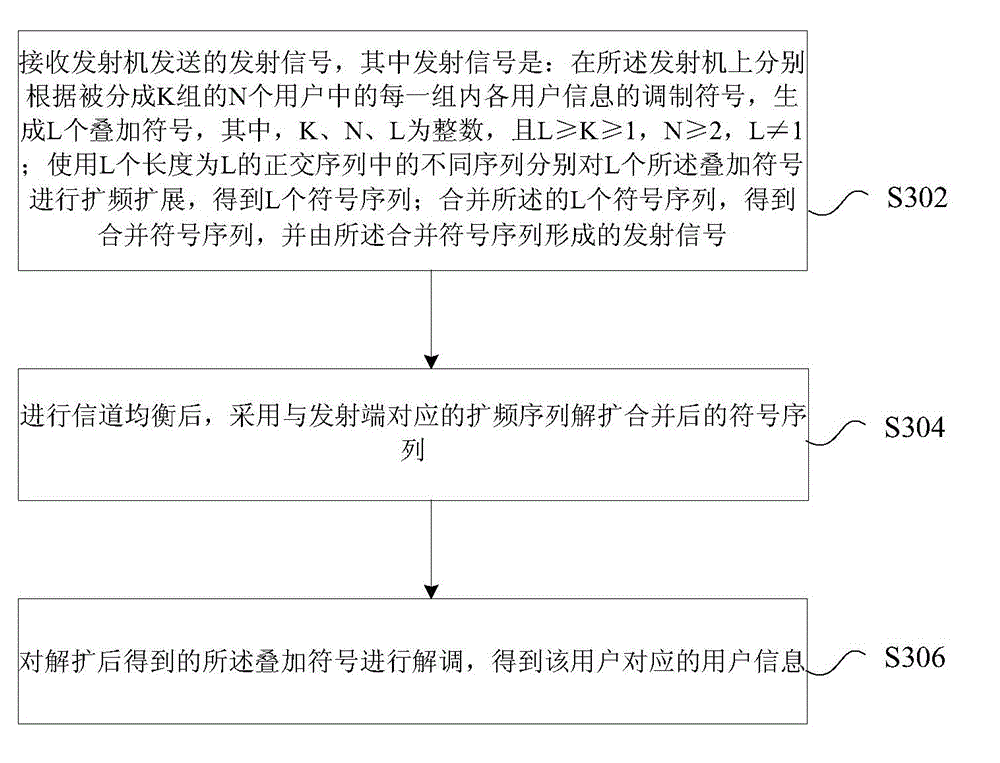Multi-user information co-channel sending method and device, and multi-user information co-channel receiving method and device
A technology of user information and sending method, which is applied in the field of communication and can solve problems such as access performance degradation
- Summary
- Abstract
- Description
- Claims
- Application Information
AI Technical Summary
Problems solved by technology
Method used
Image
Examples
Embodiment 1
[0149] In order to emphasize the characteristics of the present invention, the following preferred typical examples further illustrate the embodiments of the present invention.
[0150] There are 16 users in the cell, and the base station divides these 16 users into 8 groups, and each group has two users, one edge user and one central user. The channels between edge users and central users and the base station are differentiated.
[0151] The modulation symbols of all user information in each group are superimposed and coded to generate superimposed symbols. Different sequences in the 8×8 orthogonal sequence set are used to perform spread spectrum extension processing on each group of superimposed symbols to generate an extended symbol sequence, and 8 sets of extended symbol sequences are combined to obtain a combined symbol sequence. The base station forms a transmission signal from the combined symbol sequence and sends it to 16 user terminals. Such as Figure 11 Shown is...
Embodiment 2
[0160] Figure 17 A schematic diagram showing a typical receiver structure of the multi-user information co-channel broadcasting system according to the preferred embodiment 2 of the present invention. Such as Figure 17 As shown, the first group of user 1 receives the transmission signal from the transmitter, where the transmission signal is the base station using the spreading sequence C1 to perform spread spectrum processing on the symbols after the modulation symbols of the first group of user information are superimposed and coded, and generate the expanded The symbol sequence is the merged symbol sequence obtained by merging the symbol sequences after all group extensions.
[0161] User 1 performs channel equalization, and then uses spreading sequence C1 to despread to obtain the information corresponding to the superimposed symbols of the first group of users, and then demodulates the user information according to the corresponding method. If user 1 is a weaker user, ...
PUM
 Login to View More
Login to View More Abstract
Description
Claims
Application Information
 Login to View More
Login to View More - R&D
- Intellectual Property
- Life Sciences
- Materials
- Tech Scout
- Unparalleled Data Quality
- Higher Quality Content
- 60% Fewer Hallucinations
Browse by: Latest US Patents, China's latest patents, Technical Efficacy Thesaurus, Application Domain, Technology Topic, Popular Technical Reports.
© 2025 PatSnap. All rights reserved.Legal|Privacy policy|Modern Slavery Act Transparency Statement|Sitemap|About US| Contact US: help@patsnap.com



